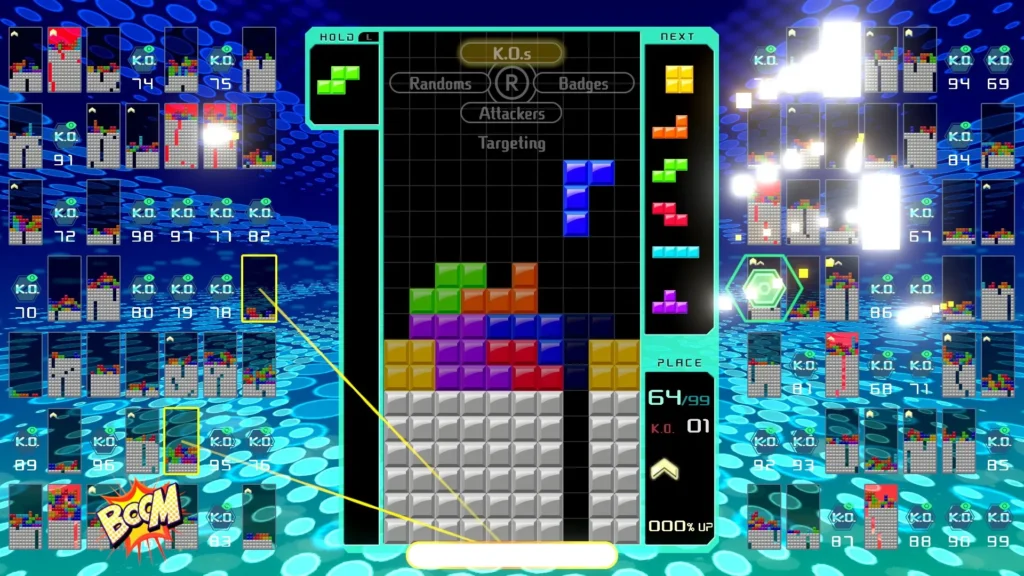The Game That Turned My Need for Control into a Full-Time Hobby
Let’s be honest: If you’ve ever felt a primal urge to reorganize your friend’s bookshelf by color or cried because the grocery store stacked soup cans wrong, Tetris isn’t just a game—it’s therapy. Created in 1984 by Soviet programmer Alexey Pajitnov, this block-stacking masterpiece isn’t about points. It’s about feeding the goblin in your brain that screams, “CLEAR LINES OR PERISH.” Welcome to the cult of Tetris, where OCD isn’t a disorder—it’s a lifestyle.

The Science of Stress-Relief (and Stress-Creation)
Tetris is the ultimate paradox. It’s a game about chaos (falling blocks) and control (your desperate attempts to fix them). Researchers call this the “Tetris Effect”—when your brain starts seeing real-life problems as Tetris grids. Parking cars? Rotate the sedan! Folding laundry? T-spin the towels!
Key Fact: Studies show playing Tetris reduces PTSD flashbacks. Coincidence? Or proof that aligning imaginary blocks distracts us from the horror of existing?
The Four-Button Symphony: A Love Letter to Perfectionists
The controls are simple: move left, move right, rotate, and DROP IT NOW. But in those four buttons lies a universe of anxiety:
- The “I” Block: The holy grail. Get two, and you’re basically Einstein.
- The “Z” and “S” Blocks: Satan’s jigsaw pieces. They exist to ruin your day.
- The Backlog of Doom: That moment when you’re four layers deep in mismatched blocks and your only hope is a miracle—or a well-timed T-spin.
Tetris doesn’t judge your life choices. It just judges your inability to plan three moves ahead.
The Soundtrack of My Neurosis
Nothing captures the duality of human existence like Tetris music. The iconic “Korobeiniki” theme starts as a cheerful Russian folk tune but morphs into a panic-inducing siren as the blocks speed up. By Level 15, it’s just your heartbeat and the sound of your sanity unspooling.
Pro Tip: If you hum the Tetris theme in public, strangers will either high-five you or call security. There is no in-between.
Tetris as a Mirror for My Soul
The way you play Tetris says everything about you:
- The Hole-Digger: Leaves gaps “for later.” Ends up buried under their own poor choices.
- The Speed Demon: Prioritizes velocity over strategy. Lives fast, dies messy.
- The Purist: Only clears lines with Tetrises (four rows at once). Has strong opinions about “integrity.”
Meanwhile, I’m over here stress-eating chips while muttering, “Rotate. Rotate. WHY WON’T YOU ROTATE?!”
Tetris Today: Still Perfect, Still Ruining Lives
40 years later, Tetris thrives because it’s flawless:
- Competitive Scene: Pros play at speeds that would make Usain Bolt cry.
- Endless Adaptations: From VR to Tetris 99 (where you battle 98 others while questioning your life choices).
- Cultural Icon: Even grandma knows what a Tetris is. “It’s the brick game, right? You need a boyfriend.”
But at its core, Tetris remains unchanged: a digital feng shui simulator for the terminally uptight.
Tetris Taught Me That Control is an Illusion (But I’ll Keep Trying)
In a world of uncertainty, Tetris is my religion. It’s the only place where chaos can be sorted, gaps can be filled, and every mistake is a lesson in “next time, do better.” Sure, my apartment’s a mess, my plants are dead, and I haven’t spoken to my family in weeks—but hey, my high score’s 1.2 million.
So, to all my fellow block-stacking neurotics: Keep rotating. Keep dropping. And remember—life’s just a game you can’t pause. But at least in Tetris, the blocks always fit eventually.
Disclaimer: This article was written by someone who paused mid-sentence to play “just one quick game.” Spoiler: It wasn’t quick. 🟦🟪🟨





Leave a Comment